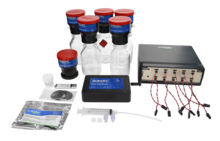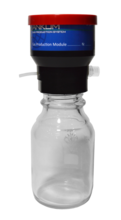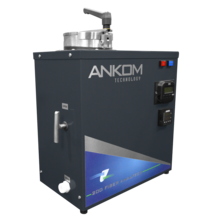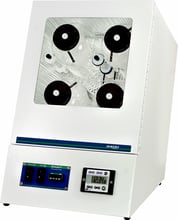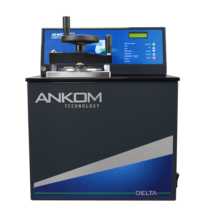
In Vitro Incubation
In Vitro, Latin for ‘in the glass,’ refers to the simulation of an organic process performed in a lab setting. Conventional True Digestibility studies, such as the Tilley-Terry (1963), are performed in vitro and consist of anaerobic fermentation using either rumen inoculum or enzymes that mimic the digestion of a sample, such as feeds or forage. Through this process, researchers discern how easily and thoroughly samples can be broken down through digestion. Agricultural research, particularly in the areas of optimal feed production and animal health, benefits from these analyses.
Methods
Studies such as the In Vitro Dry Matter Digestibility (IVDMD), In Vitro True Digestibility (IVTD), and Neutral Detergent Fiber Digestibility (NDFd) utilize different incubation and digestion times to ascertain different qualities of sample breakdown.
In Vitro is a cheaper and faster alternative to In Vivo techniques of study, an advantage for researchers conducting regular analyses. Despite these benefits, the traditional In Vitro True Digestibility method is also labor-intensive, requiring sample transfer steps and consistent temperature control to complete filtration.
IVDMD
Developed by Tilley and Terry (1963), this method measures apparent digestibility. There are two stages to the method. First, the sample is incubated for 48 hours in rumen fluid and buffer. Then, the mixture is digested in pepsin and HCl for 48 hours. Once the associated calculations are performed on the digested sample, digestibility is determined.
IVTD
The IVTD method (Van Soest, et al. 1966) is considered a true digestibility study as it involves correction for endogenous losses (apparent digestion with the IVDMD does not include this step). IVTD begins by incubating a sample in rumen fluid for 30-48 hours. Then, the sample is digested, after which an NDF extraction is performed. The NDF extraction replaces the pepsin and HCl step in IVDMD, providing the endogenous loss correction.
NDFd
Ascertaining the ND value of a tested feedstuff allows for the estimation of cell wall digestibility. This is achieved by drying, grinding, and incubating the sample in buffered rumen fluid at a series of time increments. The amount of neutral detergent fiber digested in the selected time frame provides the user with the NDFd value.
Ruminant Nutrition
Ruminant animals are defined as herbivore animals that derive energy from plant fibers (cellulose) and material. The term ruminant takes its meaning from the Latin word ‘ruminare’, or ‘to chew over again’. These animals have four stomach chambers. The reticulum, rumen (sometimes referred to as the reticular-rumen because they are not completely separated), omasum and abomasum. The abomasum is essentially the true stomach in that it functions much the same as the monogastric stomach with the digestion of protein by the secretion of pepsin and HCl. Digestion in the ruminant starts with the fermentation that takes place primarily in the rumen where microbes break down cellulose, other carbohydrates, and protein, producing volatile fatty acids and microbial cells.
Methods
Ruminant studies are performed worldwide as researchers seek to gain more insight into the dynamics of digestion and fermentation. Understanding the nutritional needs of ruminants and measuring the quality of the forages they consume is critical to evaluation of the productive performance of the animal and the value of the forage.
Forage Evaluation
The digestibility of a forage was first estimated by the Crude Fiber analysis. Seeking to improve the evaluation of forages for ruminants, Van Soest developed the Neutral Detergent Fiber analysis (NDF) and the Acid Detergent Fiber analysis (ADF). Presently ruminant nutritionists, livestock farmers, researchers and regulatory bodies rely on these analyses for determining the nutritional value of forages and feeds.
Evaluating Rumen Fermentation
Early in vivo evaluation of rumen fermentation was performed by placing the forage or feed in a sealed woven bag and inserting it into the rumen through a surgically formed fistula in the side of the animal. During the residence time in the rumen, the rumen fluid, along with the microbes, would enter the bag and digest the sample in a dynamic exchange of rumen fluid. This process can be carried out in vitro by performing rumen fermentation in a vessel and placing the samples to be evaluated in bags in the vessel. Measures of microbial digestion in these procedures are valuable information in the evaluation of the nutritional value of the samples for ruminant nutrition.
Gas Production Measurement
In ruminant nutrition, gas production can be used to determine the dynamics of the fermentation process. The rate of evolution of gas indicates how rapidly the feed sample is being metabolized and how available the nutrients are for the animal.
Part #
Wireless Gas Production Measurement The ANKOM RF Gas Production System provides an easy-to-use method for monitoring and measuring gas production. Samples and microbes (or other fermentation sources) are placed in the bottles; the RF sensor module is...
Part #
RF1X Gas Production Modules can be added to an ANKOM RF Gas Production System (Base Kit). A total of 50 modules can be connected to a GEN 3 RFS system. Please specify a bottle type. NOTE: Standard RF1X modules come with 250ml bottles. For different...
Part #
Semi-Automated Crude & Detergent Fiber Performs AOCS Ba 6a-05 Crude Fiber, Acid Detergent Fiber, and Neutral Detergent Fiber analyses for all feeds and forages. The ANKOM 200 Fiber Analyzer has been subjected to rigorous testing over a broad range of...
Part #
Reliable In-Vitro Incubation The DAISY II Incubator has a demonstrated history of rigorous testing over a broad range of sample types. Labs around the world have achieved results in In Vitro True Digestibility, Apparent Digestibility, Rate studies...
Part #
Automated Crude & Detergent Fiber Analysis The ANKOM DELTA Fiber Analyzer automates fiber determinations at the highest level. Capable of Acid Detergent, Neutral Detergent, and Crude Fiber analysis (AOCS Ba 6a-05), the ANKOM DELTA includes an...
